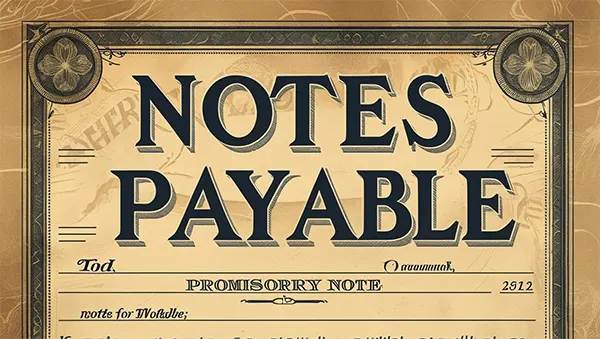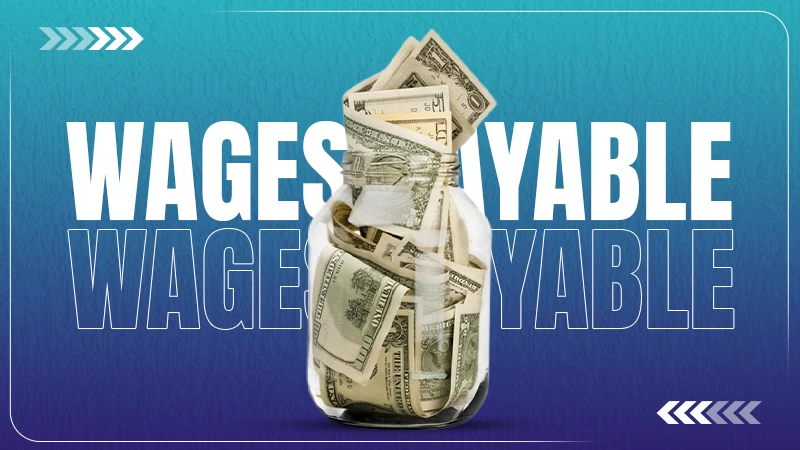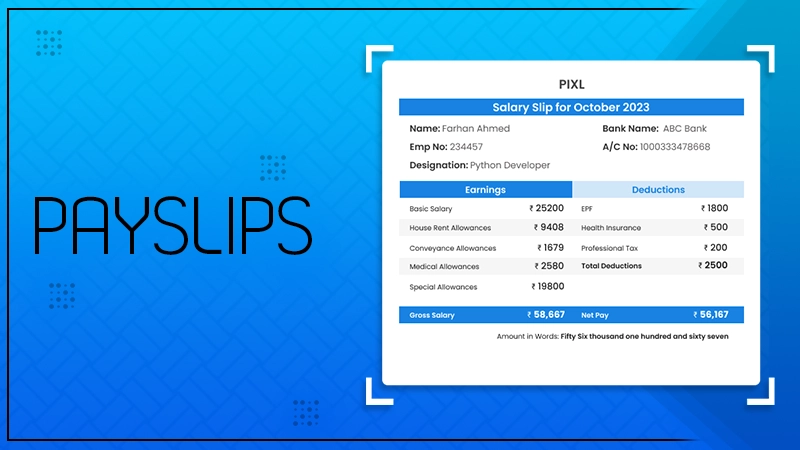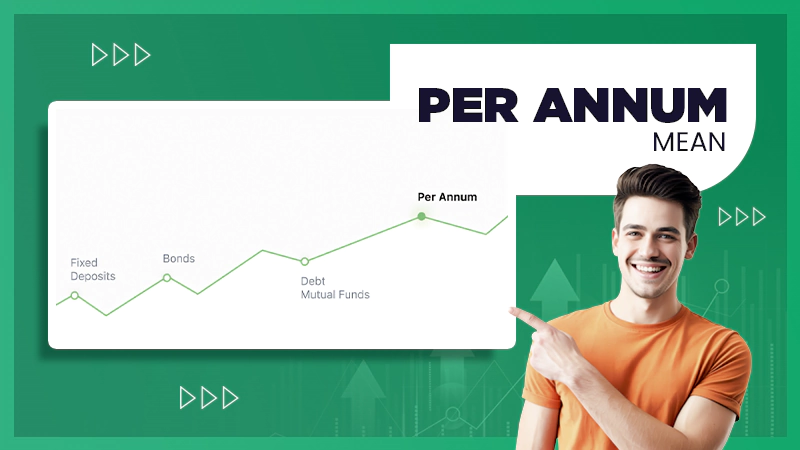The note payable is a formal written document that contains the original borrowed amount, interest rate, due date, and the borrower’s name or signature.
In the present time, legal documents are essential as evidence to showcase credibility. That’s where notes payable agreements come into play. It is a formal promissory note where a borrower promises to repay borrowed money to the lender. This type of debt is commonly used to recover cash flow or purchase assets.
So, if you’re interested in gathering detailed information on a promissory note, you are at the right place. Here, I’ve mentioned information about notes payable meaning, how to calculate it, and notes payable vs accounts payable.
Let’s dive in without further ado!
What is Notes Payable?

In accounting, notes payable are a form of legal document where a borrower commits to pay a lump sum of money, along with interest, to a lender within a specific period of time or on a predetermined date. You can think of it as a “promissory note.”
These agreements are recorded as long-term liabilities on the borrower’s balance sheet, which helps maintain the borrower’s business finances.
A notes payable document includes the following terms:
- Details and terms of the agreement
- Principal amount borrowed
- Due date of payment
- Interest rate
- Name of the payer and payee
- Signature of the person who issues the note with the date agreed upon.
Moreover, the duration of the notes payable can be both short-term and long-term, depending on the time. If the promissory note is due within 12 months, it is a short-term note payable, while long-term notes payable are due after one year.
Are Notes Payable an Asset or a Liability?
Notes payable are a liability for a company that borrowed an amount of money from lenders (such as banks and financial institutions that offer funds).
- Short-term notes payable are considered current liabilities
- Long-term notes payable are recorded as non-current liabilities.
When a company takes money, cash is debited, and notes payable are credited in the journal entries. The classification indicates that a liability account is increasing, and the company has legal obligations to repay the debt with interest.
Overall, notes payable are a liability that provides a broad picture of an organization’s financial health, liquidity, and overall risk profile.
What are the Different Types of Notes Payable?
There are four types of notes payable: single-payment notes, amortized notes, interest-only notes, and negative amortization notes. Therefore, it is essential to understand these distinct aspects when considering loans.
That’s why I’ve mentioned all 4 types of notes payable here for your guidance.
1. Single-Payment Notes
A single-payment note requires the borrower to repay the entire amount, including both principal (original money borrowed) and interest, at the due date.
This type of promissory note is ideal for short-term borrowing to meet financial needs. It is commonly used for covering low financial gaps, repayment, and purchasing inventory.
2. Amortized Notes
Amortized notes allow a company to pay regular payments (monthly or quarterly) according to predetermined terms and conditions. It helps in managing principal and interest regularly, resulting in reducing lump sum stress at the due period.
This repayment structure is helpful for a borrower to balance business loans and track debt reduction over time. It is often used for mortgages and property loans.
3. Interest-Only Notes
In this structure, a business owner needs to pay only accrued interest during the loan period. However, the entire original amount is due at the maturity period in a single large payment.
Interest-only notes are beneficial for businesses that are expected to improve their cash flow in the future. It is frequently used in real estate development and agriculture.
4. Negative Amortization Notes
Negative amortization notes are a less common type of structure. It allows an organization to pay lower payments than the interest incurred. The remaining amount will be added to the loan amount, causing the principal to increase over time instead of decreasing.
It often gives relief in the initial days by lowering interest payments, but increases debt as time passes. This type of structure is only used in specialized financing during lean times.
How to Determine Interest on Notes Payable?

Calculating interest rates can be beneficial for you to opt for the best type of notes payable. It is necessary to evaluate interest while obtaining a loan from a financing institution that meets your financial requirements.
Let’s take a look at the standard formula for calculating interest on notes payable.
| Interest = Principal x Rate x Time |
Where:
Principal = The original amount you borrowed from the lender.
Rate = A portion of the borrowed money, also known as “interest rate.”
Time = The duration for which funds are received.
Example: If a “Nutshell” company borrowed $100,000 at a 6% annual interest rate for 5 years, what is the interest amount this firm has to pay?
Calculation:
Interest = Principal x Rate x Time
$100,000 x 6% x 5
$30,000
An amount of “$30,000” has to be paid to the lender either during the loan period or at the maturity date with the principal amount. It is important to consider that the interest amount of promissory notes is recorded as a separate short-term liability.
How to Calculate Notes Payable?

After calculating the interest amount, you have to evaluate notes payable to figure out the entire single amount incurred. The formula to calculate notes payable is:
Here, I’ve jotted down straightforward steps to help you calculate notes payable easily.
1. Determine the Principal Amount
Firstly, you must identify the amount that was borrowed in order to determine how much your business pays. It is clearly stated in the promissory note or legal document.
2. Calculate Accrued Interest
Secondly, you need to calculate the interest rate that is applied to the principal amount. It is crucial to note that interest accumulates over time based on the agreed terms of bank notes payable.
Formula for calculating interest:
Interest = Principal x Rate x Time
3. Subtract Payment Made
If you have already paid a portion of the amount borrowed, you should subtract that money from the sum of principal and accrued interest. It helps in calculating the outstanding balance of a loan at a specific time.
Practical Examples of Notes Payable
Let’s look at real-time examples to calculate notes payable for a better understanding. This way, you can efficiently improve cash flow in your business and invest in growth initiative assets.
Example 1: A business owner takes a loan of $10,000 from a certified bank to purchase inventory. The bank agrees to grant a loan with an interest rate of 5% for one year. Now, calculate the note’s payable amount.
First, calculate the interest:
Interest = Principal x Rate x Time
$10,000 x 5% x 1
$500
Now, compute notes payable:
Notes Payable = Principal Amount + Accrued Interest – Payments Made
$10,000 + $500 – $0 (because payment is not made earlier)
$10,500
The total amount of $10,500 (notes payable) is paid to the banker at the end of the loan period, including principal and interest.
Journal entry:
- At the time of borrowing a loan from a certified bank.
| Date | Account | Debit | Credit |
| 1 May 2024 | Cash a/c | $10,000 | |
| To Notes Payable | $10,000 |
- Due interest payment at the end of the loan period.
| Date | Account | Debit | Credit |
| 1 May 2025 | Interest Expense | $500 | |
| To Interest Payable | $500 |
- The final settlement of the borrowed amount is paid at the maturity date.
| Date | Account | Debit | Credit |
| 1 May 2025 | Notes Payable | $10,000 | |
| Interest Payable | $500 | ||
| To Cash a/c | $10,500 |
Example 2: A “TechEmpower” organization borrows $550,000 at an 8% annual interest rate for one year and makes $20,000 halfway through the year. The firm uses this fund to set up a new building to expand its business into other states. Now, calculate notes payable based on the given principal amount and interest rate.
Let’s begin evaluating notes payable:
Principal amount = $550,000
Interest Rate = 8%
Time Period = 1 year
Payment made halfway = $20,000
Let’s calculate the interest amount for the first 6 months:
Interest (1) = Principal x Rate x Time
$550,000 x 8% x 0.5
$22,000
New principal amount for the next 6 months = $550,000 – $20,000
$530,000
After deducting $20,000 from the principal, find out the new interest.
Interest (2) = Principal x Rate x Time
$530,000 x 8% x 0.5
21,200
Total Interest = Interest (1) + Interest (2)
$22,000 + $21,200
$43,200
Now, calculate notes payable:
Notes Payable = Principal Amount + Accrued Interest – Payments Made
$550,000 + $42,200 – $20,000
$573,200
In this instance, you have to subtract payments made earlier while calculating bank notes payable. So, the company pays only $574,000 at the maturity date after deducting $20,000.
Journal entry:
- When the company borrows money from a lender, under notes payable.
| Date | Account | Debit | Credit |
| 1 April 2024 | Cash | $550,000 | |
| Notes Payable | $550,000 |
- When a portion of borrowed money is paid mid-year.
| Date | Account | Debit | Credit |
| 1 September 2024 | Notes Payable | $20,000 | |
| Cash | $20,000 |
- When interest expense has not yet been paid.
| Date | Account | Debit | Credit |
| 1 April 2025 | Interest Expense | $43,200 | |
| Interest Payable | $43,200 |
- When the firm settles the final payment with interest.
| Date | Account | Debit | Credit |
| 1 April 2025 | Notes Payable | $530,000 | |
| Interest Payable | $43,200 | ||
| Cash | $573,200 |
Notes Payable vs Accounts Payable: What’s the Difference?
Although notes payable and accounts payable are both liquidity accounts, they differ from each other. Notes payable are formal loans with interest, while accounts payable offer short-term and interest-free debts.
Yet, you want to know about notes payable vs accounts payable. Let’s dive into the breakdown table.
| Aspect | Notes Payable | Accounts Payable |
| Definition | It serves as a loan that a company borrows from banks. | These are debts that a company owes to its suppliers. |
| Standardization | Formal, legal, and structured promissory note. | Informal and based on mutual trust. |
| Interest | Include predetermined interest rates. | Interest-free debt until payment delays. |
| Collateral | Need collateral as security to reduce risk. | Do not require collateral. |
| Duration | Can be short or long, based on the promissory note. | Helpful for short-term obligations (e.g., 30 to 90 days). |
| Balance Sheet | Recorded as both a current and long-term liability, depending on the time period. | Recorded as a current liability. |
| Risk | High risk due to formal agreement and predetermined interest. | Considered as low risk due to the low debt amount. |
Advantages and Disadvantages of Using Notes Payable
While notes payable are a structured and legal document, they also have potential downsides. Therefore, you must be aware of both the advantages and disadvantages of promissory notes to make informed decisions.
Pros of Using Notes Payable
Here are the following advantages of using notes payable to take loans from the lender:
- Notes payable provide significant capital for investments, assets, and expansion. This helps businesses to improve cash flow and grow faster.
- The formal promissory notes offer clear payment schedules, predetermined interest, and due dates, facilitating budgeting and transparency.
- Unlike selling shares to investors, it allows financing business operations without diluting ownership and control.
- Interest paid on notes payable is often tax-deductible, resulting in a lower overall cost of capital financing.
Cons of Using Notes Payable
The notes payable also come with certain negatives. Now, let’s take a look at these adverse implications.
- If a borrower has a poor credit history, the interest rate may be higher than that of other credit sources.
- Strict payment terms and a large single amount due at the end of the loan period lead to financial strain and anxiety.
- Failure to make repayments on time can damage a credit score, incur penalties, and lead to legal action. Not only this, but you could also lose collateral assets.
- Notes payable agreements are legally binding and often more complex than accounts payable.
Wrapping Up!
In conclusion, notes payable are also known as promissory notes, where a borrower promises to repay borrowed money at maturity time. It is a legally written agreement recorded as a liability in the balance sheet, representing an obligation to pay debt for a company.
Furthermore, it helps improve cash flow, purchasing inventory, and business expansion. If you also want to take loans under notes payable, you should consult professional experts because it involves complex calculations.
- What is Notes Payable?
- Are Notes Payable an Asset or a Liability?
- What are the Different Types of Notes Payable?
- How to Determine Interest on Notes Payable?
- How to Calculate Notes Payable?
- Practical Examples of Notes Payable
- Notes Payable vs Accounts Payable: What’s the Difference?
- Advantages and Disadvantages of Using Notes Payable
- Wrapping Up!












